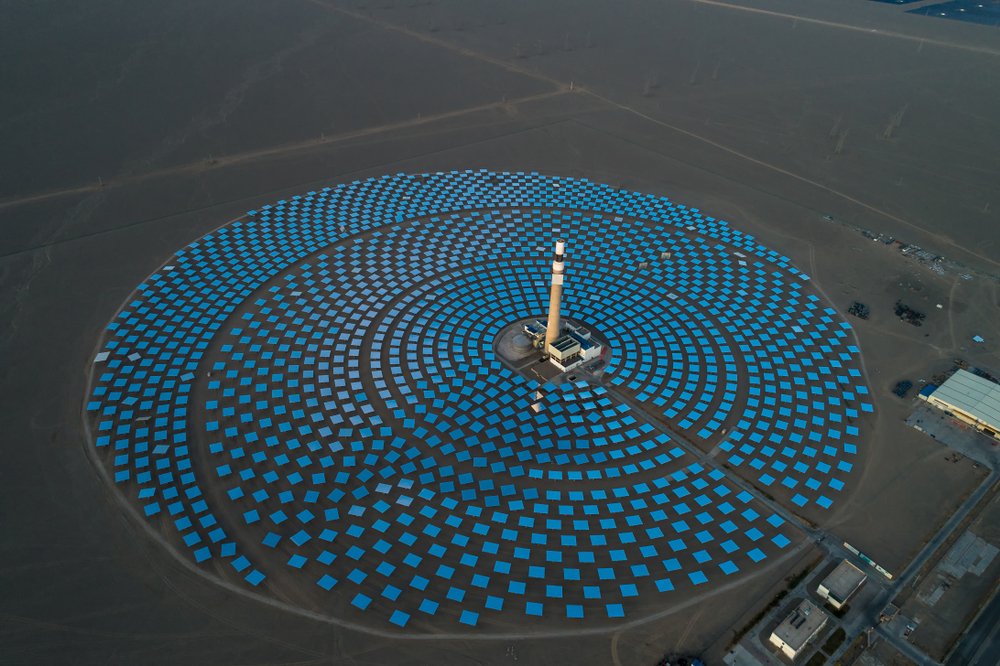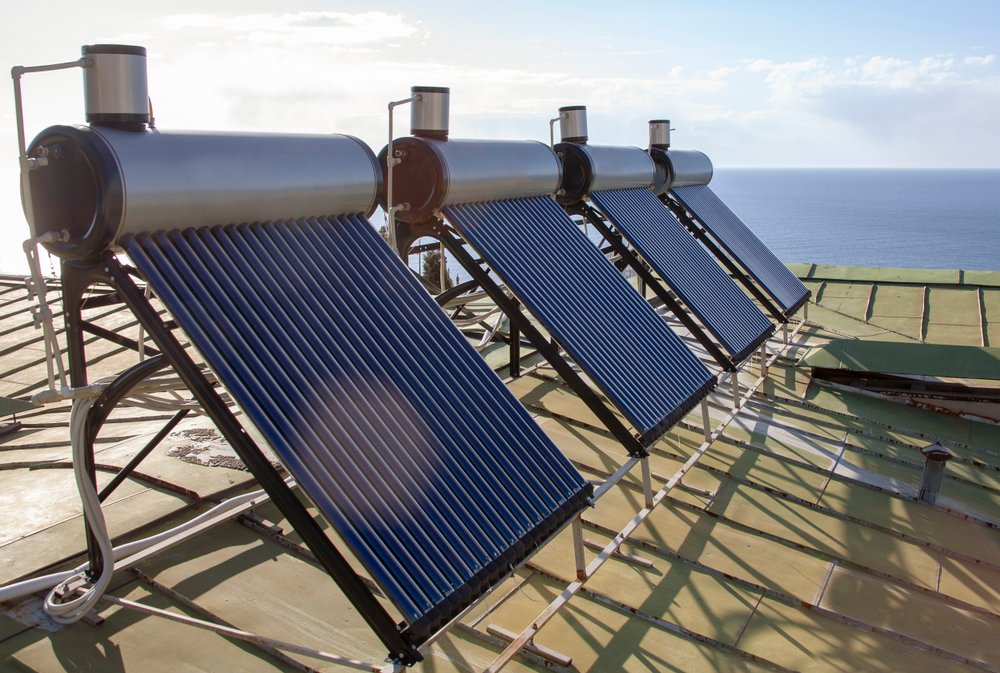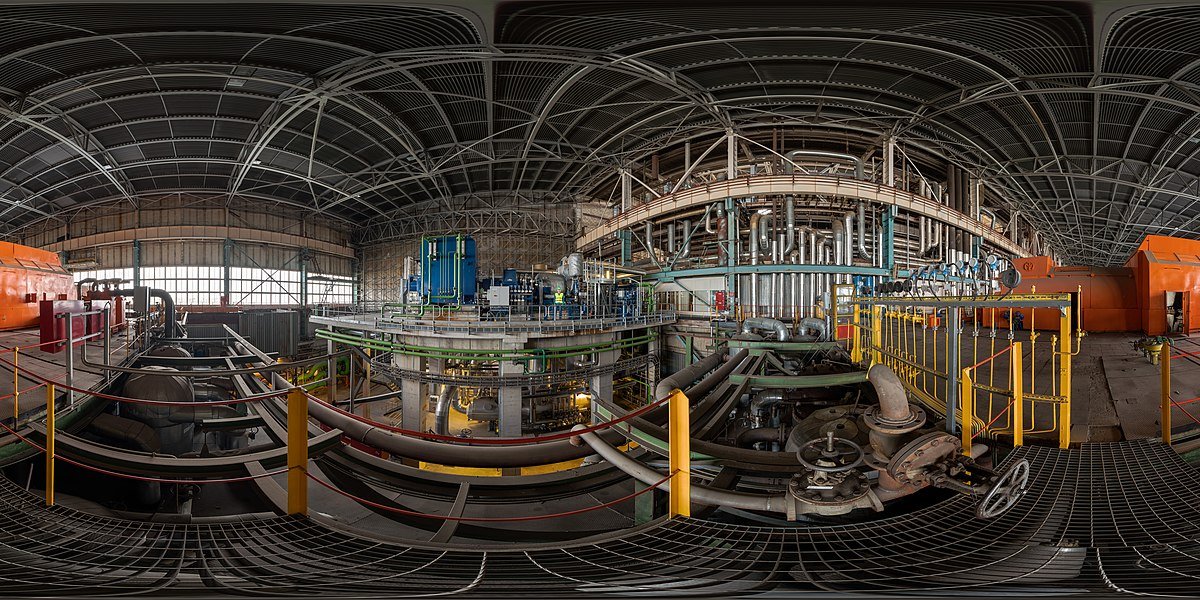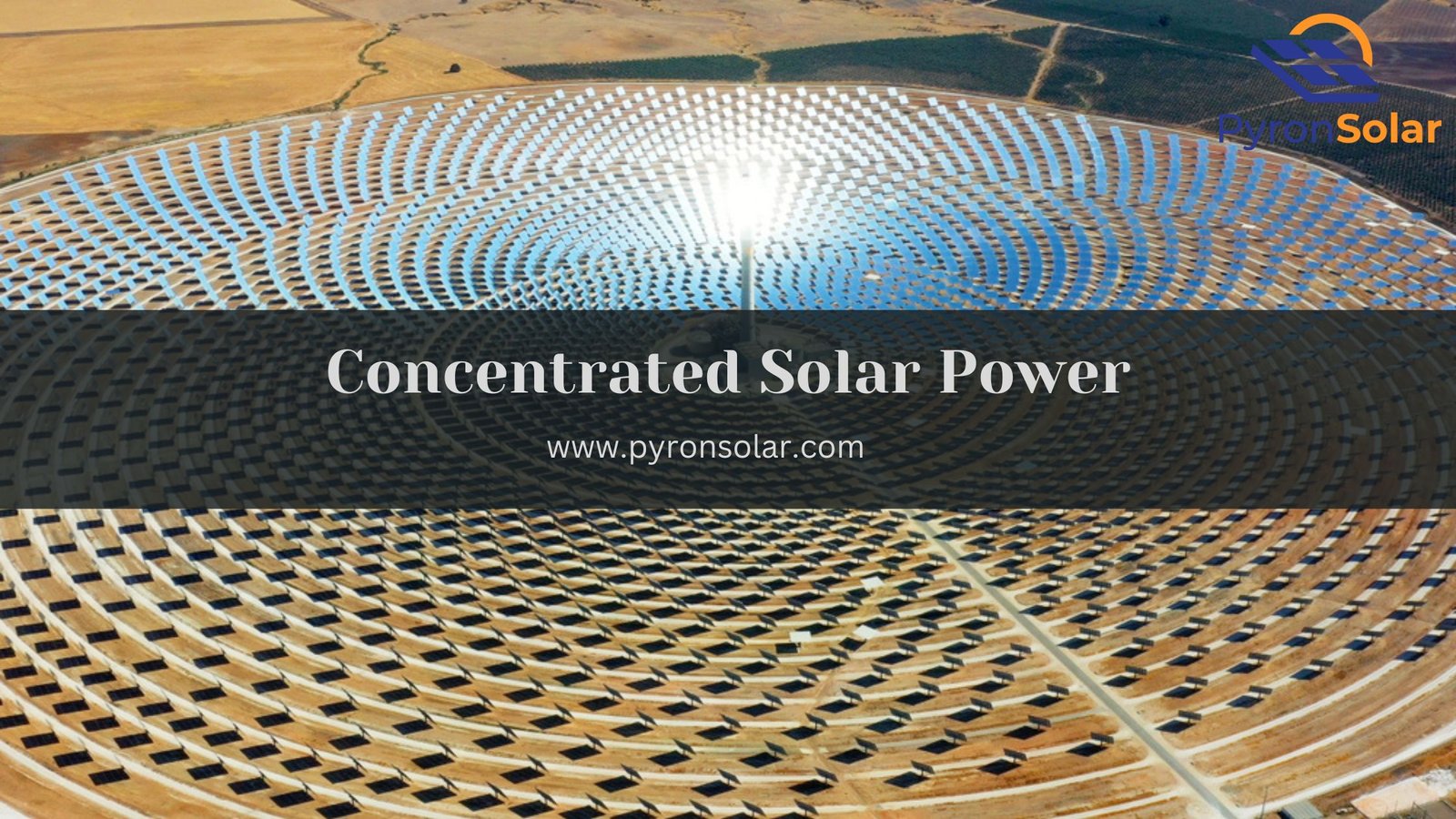Concentrated Solar Power (CSP) can be defined as a unique type of solar thermal energy technology that uses mirrors to generate electricity. Unlike the traditional photovoltaic (PV) solar panels that convert sunlight into electricity directly, the main principle of CSP involves using mirrors to reflect and focus natural sunlight onto a receiver, to convert it into heat. As a result, steam is produced to drive the turbine and generate electricity.
The CSP technology is a repetitive process that stores the heat energy produced and utilizes it when needed, especially during low sunlight, cloudy, or night hours. Currently, CSP plants in the USA are operated roughly for 1,815 megawatts (MW) and it is the 2nd country to have most CSP installations.
Different types of CSP systems are suitable for utility-scale projects having the ability to generate huge amounts of electricity. Solar Thermal Power plants are constructed with various capacities ranging from ten megawatts to several hundred megawatts. Concentrated Solar Power (CSP) plants can be operated based on the different requirements of industrial applications such as water desalination, food processing, enhanced oil recovery, chemical production, waste management, mineral processing, and several others.
Similar to the USA having the most number of CSP installations in Arizona, California, Florida, and Nevada, certain countries across the world implement the same technology by setting up in various localities.
To understand the uses of Concentrated Solar Power Plants in detail, it is mandatory to understand the brief history of CSP and the requirements of major components for proper functioning by considering the pros and cons.
Also, it would be intriguing to walk across the comparison of CSP vs PV cells. Moreover, the efficiency and cost of CSP vary when compared to traditional solar panels. Before knowing about concentrated solar power, you should also know what solar energy is.
Brief History of CSP
A brief history of Concentrated Solar Power technology was documented in 1866 when Auguste Mouchout, a French scientist utilized parabolic troughs to heat water and generate steam to operate the first solar steam engine.
In 1912, Frank Shuman, an American inventor and business entrepreneur established parabolic solar collectors in a small farming community in Meadi, Egypt. Being an expertized solar visionary, he built the first solar thermal power station in Egypt in 1913 which used parabolic troughs to produce steam, driving large water pumps and pumping 6000 gallons of water per minute to dry regions.
In 1968, Professor Giovanni Francia built the first operational concentrated solar power plant in Sant’llario, Italy.
The U.S. Department of Energy in 1982 began operating “Solar One” along with an industry consortium. But, it was in 1986 when SEGS (Solar Energy Generating Systems) commissioned The world’s largest solar thermal factory in California.
In 1996, “Solar Two”, which is the upgraded version of Solar One, was once again operated till 1999 by the U.S. Department of Energy along with the industry consortium.
Mainly, the solar energy was stored efficiently and economically using Solar Two to produce power during less sunlight conditions.
By June 2010, 34 Concentrated Solar Power plants were installed globally operating for 880.45 MW.
Currently, some of the popular concentrated solar power companies include Abengoa, ACCIONA, BrightSource, GE Renewable Energy, eSolar, and many more.
What are the main components of the CSP Plant?
Typically, a CSP plant consists of these 3 main following components namely:
1. Solar Collectors: To capture and concentrate the sun’s radiation, there are different types of solar collectors like parabolic troughs, parabolic dishes, and solar power towers. The main purpose of mirrors or lenses is to focus sunlight onto a receiver, that absorbs the energy and converts it into different forms of energy like heat or electricity.

2. Thermal Energy Storage: CSP plants can store excess energy using the thermal storage system that can store excess energy to generate heat during sunny periods to provide consistent and reliable power output.

3. Power Block: The conversion process of converting and capturing thermal energy into electricity can be performed with the help of a power block, which is the core component of the CSP plant. It consists of a heat exchanger, a working for a heat transfer fluid like molten salt or oil that circulates through pipes in the receiver to trap the absorbed heat. Importantly, the heat energy is converted into steam using a heat exchanger. The generated steam is used to drive the turbine which is connected to a generator that helps convert mechanical to electrical energy.

Finally, a power distribution system is used to transmit the generated electricity to run different appliances for residential and commercial purposes. This is how a Concentrated Solar Power Plant works.
Different Types of the CSP Systems
There are four different types of CSP systems with various designs and configurations depending on the inclusion of thermal storage energy:
1. Parabolic Trough Systems: Parabolically curved trough-shaped reflectors are one of the unique types of Concentrated Solar Power Systems that focus the sun’s energy onto a receiver pipe that runs above the curved surface of the mirrors. The temperature of the heat transfer fluid such as the thermal oil increases from 293°C to 393°C. The heat energy generates electricity in a conventional steam generator.
In a collector field, multiple parabolic trough-shaped mirrors are aligned in parallel rows such that receiver pipes continuously focus on the sun from east to west.
2. Power tower Systems: The power tower systems are also known as the central receiver system that utilizes heliostats- sun-tracking mirrors, to focus sunlight onto a receiver at the top of a tower. A receiver boils the heat transfer fluid to 600°C to produce steam, which can be used to operate a conventional turbine generator to generate electricity.
3. Linear Fresnel Systems: A Linear concentrating collectors field consists of a large number of collectors in parallel rows with fresnel as a core component, which is similar to the long arrays of Parabolic Trough Systems. To maximize the energy collection during summer and annually, the system is aligned in a north-south orientation.
The sunlight is reflected in the pipe above when the mirrors are laid flat on the ground. Fresnel incorporates storage into the power blocks or generates steam for direct use, similar to the trough and tower.
4. Parabolic Dish Systems: A parabolic-shaped point focus concentrator in the form of a dish reflects solar energy onto a receiver. The concentrators are mounted with a two-axis tracking system. The heat engine mounted on a receiver directly utilizes the heat.
Requirements for a CSP Systems
Building a Concentrated Solar Power (CSP) system involves key requirements by considering the following factors:
- Financing: Securing reliable financing by collaborating with public and private entities can accelerate the project development by sharing the financial burdens. The longer lifespans of CSP for 25 to 30 years help overcome the higher upfront costs including mirrors, receivers, turbines, and thermal storage systems. Also, many governments offer incentives like tax breaks and loan guarantees to support CSP development and reduce financial risks.
- Land: CSP plants significantly require a large area that ranges from the capacity of 5 to 10 acres per megawatt (MW), due to the requirements of solar collectors, mirrors, and other requirements. To enhance good sun exposure, the land should be flat with minimal shading of trees without any environmental constraints.
- Areas of High Solar Radiation: CSP plants can operate efficiently in areas with high levels of solar radiation. Areas located closer to the equator receive more sunlight and are ideal for CSP projects.
- Access to water resources: By gaining access to reliable water resources, CSP systems can be operated efficiently and minimize the severe environmental impacts. Since the traditional CSP systems utilize a large amount of water for cooling purposes, it leads to serious concerns in regions where water scarcity is at peak levels.
- Access to High Capacity Transmission: Most often, Concentrated Solar Power stations are located in remote areas with the capacity to receive abundant sunlight that requires access to high-voltage transmission lines to generate electricity. As a result, the generated power is delivered to the grid efficiently and reliably. Upgrading or expanding transmission lines can easily connect large-scale plants to the grid.
Efficiency of CSP
The efficiency of CSP varies on several factors like the type of system, receiver, and engine to estimate how much concentrated solar power will run.
According to the stats provided by EnergySage, a majority of Concentrated Solar Power systems will have an efficiency of 7 to 25%. When compared to the efficiency rate solar panels in the current market ranges between 14 to 23%.
Cost of CSP
The Average Levelized Cost Of Energy (LCOE) for CSP is a method used to compare alternative methods of energy production by considering the economic
competitiveness of different electricity generation systems. It is calculated by dividing the lifetime cost of the Concentrated Solar Power Plants by its lifetime production.
The LCOE of the CSP plants has decreased by 69% between 2010 and 2022, and by the end of 2021, the LCOE dropped from USD 0.380/kWh to a below-par value of USD 0.1/kWh.
Pros and Cons of CSP
Here are the pros and cons of Concentrated Solar Power Plant (CSP) tabulated below in brief:
| S.No | Pros | Cons |
| 1. | Longer Lifespan | Requires larger land area |
| 2. | Larger capacity to store energy | Costly Transmission and Infrastructure |
| 3. | Flexible technology for diverse applications | Weather dependence |
| 4. | Renewable and clean source of energy | Higher water consumption |
| 5. | Employment creation and economic development | Technological limitations |
| 6. | High scalability | Higher upfront costs |
Pros of CSP
Here is a detailed explanation of the pros of CSP:
1. Longer Lifespan: Typically, Concentrated Solar Power Plants have the advantage of a longer lifespan of 25 to 30 years making them a stable and reliable source of energy with proper maintenance.
2. Larger capacity to store energy: Advanced solar thermal technologies like molten salt storage allow to storage of additional heat generated during peak sunlight hours. To ensure a continuous power supply during rainy or cloudy hours, the stored heat can be used to generate electricity.
3. Flexible technology for diverse applications: The Concentrated Solar Power technology is flexible enough to be used for diverse applications which include electricity generation, heating water, space heating, and cooling for residential and commercial purposes.
4. Renewable and clean source of energy: Solar thermal energy technology is one of the significant sources of renewable energy which ensures that the environment is clean without emitting any greenhouse gases and does not deplete any natural resources.
5. Employment creation and economic development: Many employment opportunities are created in local communities with the development of solar thermal energy projects that lead to significant economic growth.
6. Flexible scalability: Ranging from small-scale utility systems to large-scale utility power plants, there is a flexible scalability to satisfy diverse energy needs.
Cons of CSP
While CSP offers several advantages, at the same time, it becomes crucial to consider its cons that lead to potential drawbacks:
1. Requires larger land area: A larger area of land is required for CSP plant installation which can lead to habitat destruction and conflicts in land usage.
2. Costly Transmission and Infrastructure: In remote areas or regions with abundant sunlight, an additional transmission is required to supply electricity to urban centers, which results in building a costly infrastructure. Indeed, it is a time-consuming process.
3. Weather dependence: During cloudy or rainy days, the CSP plants fail to perform effectively due to their dependence on sunny weather conditions. Consequently, an additional storage backup is required to meet the energy demands.
4. Higher water consumption: CSP technologies that produce steam to drive a turbine for electricity generation result in higher water consumption, which can be a drawback in dry regions.
5. Technology limitations: Certain complications in technology involve concentrating sunlight, heat transfer, thermal energy storage, and power generation which pose limitations in the success rate. Further advancements are required to boost the efficiency rate and reduce the additional cost.
6. Higher upfront costs: Despite the operational costs being low, one of the major disadvantages of Concentrated Solar power Plants is the higher upfront cost of setting up solar thermal power plants. It becomes a barrier to setting up mirrors, receivers, turbines, and thermal storage.
CSP vs PV cells: A Brief Comparison of the Concentrated Solar Power vs Photovoltaic cells
The interesting comparison of CSP vs PV cells involves considering major factors since these two technologies are used nowadays to generate electricity. Both Concentrated Solar Power and photovoltaic cells differ from each other having certain advantages and disadvantages:
1. Technology:
CSP concentrates sunlight onto a receiver using mirrors and heats the working fluid like molten salt to produce high temperatures. Similar to a standard power plant, the heat drives the turbine to generate electricity.
On the other side, the solar panels absorb sunlight through the Photovoltaic panels which causes electrons to move and generate electricity without involving any heat conversion process.
2. Efficiency:
Concentrated Solar Power plants have a higher efficiency of 7 to 25% when compared to commercial PV panels of 15 to 22%.
3. Cost:
The CSP plants have higher initial costs due to the complex infrastructure and materials used for large-scale projects. Whereas, the PV panels are cheaper according to the per-watt installation rate for residential and commercial purposes of small-scale applications.
4. Environmental impact:
The manufacturing process of PV panels involves harmful materials and toxic chemicals that have a huge impact on environmental impact compared to the CSP plants.
5. Applications:
CSPs are used for large-scale utility projects with their ability to dispatch power and incorporate thermal energy storage. Whereas, the PV panels can be used in homes, offices, utility solar mirror farms, and several others.
What are the main applications of CSP?
The U.S. Department of Energy: Solar Energy Technologies Office (SETO) supports Concentrated Solar Power (CSP) possessing a wide range of applications in various sectors such as:
1. Desalination: Fresh water can be refined from the sea or distilled water sources by using the CSP technology which follows the process of solar desalination. By utilizing solar power directly or indirectly, the steam is generated by heating the water, and vapor is condensed to produce fresh water to address the water scarcity challenges in dry regions by utilizing abundant sunlight.
2. Green Hydrogen Production: CSP when integrated with renewable energy process via the solar-driven electrolysis systems results in the production of green hydrogen by splitting the water molecules into Hydrogen and Oxygen gases. The Hydrogen produced from CSP can be used as a clean fuel for transportation and energy storage applications. Though the gas produced is free from emissions, it is an expensive form of clean gas.
3. Food Processing: Various food processing applications like drying, pasteurization, and sterilization can be performed using CSP heat to ensure food safety and longevity.
4. Enhanced Oil Recovery: The heat generated from the CSP oil reservoirs into oil reservoirs upgrades the extraction process with enhanced efficiency and reduced greenhouse gases compared to the standard methods.
5. District Heating: Solar District heating plants are large-scale applications of solar thermal technology that capture the heat to warm living spaces, and water in residential, commercial, and industrial buildings. Large-size district heating plants are highly efficient, and economical and cause less pollution compared to traditional fossil fuels.
{Video Credit- Innovative Techs}
Which countries have the most number of CSP installations?
Here is the list of the top 5 countries that have the most number of CSP installations, with Spain leading with the first rank with a majority difference:
| S. No | Country | Number of Installations | Installed Capacity (mW) | Annual Energy Production (mWh) |
| 1. | Spain | 53 | 2,304 | 5,155 |
| 2. | United States (US) | 34 | 1,815 | 3.420 |
| 3. | China | 17 | 596 | 1,368 |
| 4. | Morocco | 5 | 540 | 2,322 |
| 5. | South Africa | 4 | 400 | 1,800 |
How many CSP Plants are there in the USA?
At the end of 2023, it was estimated according to the information provided by the Solar Energy Industries Association (SEIA) that 24 CSP (Concentrated Solar Power) plants are operated in the USA with a generating capacity of 1,815 megawatts (MWac).
The top 5 CSP plants in the USA are tabulated below according to their electrical capacity in mW:
| S. No | Country | Electrical Capacity (mW) | Developer | Type of Technology |
| 1. | Ivanpah Solar Power Facility | 392 | BrightSource Energy, Bechtel | Solar power tower |
| 2. | Solar Energy Generating Systems (SEGS) | 310 | Luz Industries | Parabolic trough |
| 3. | Mojave Solar Project | 280 | Abengoa Solar | Parabolic trough |
| 4. | Solana Generating Station | 280 | Abengoa Solar | Parabolic trough |
| 5. | Crescent Dunes Solar Energy Project | 125 | SolarReserve | Solar power tower |
Ray is an avid reader and writer with over 25 years of experience serving various domestic and multinational private and public energy companies in the USA.

